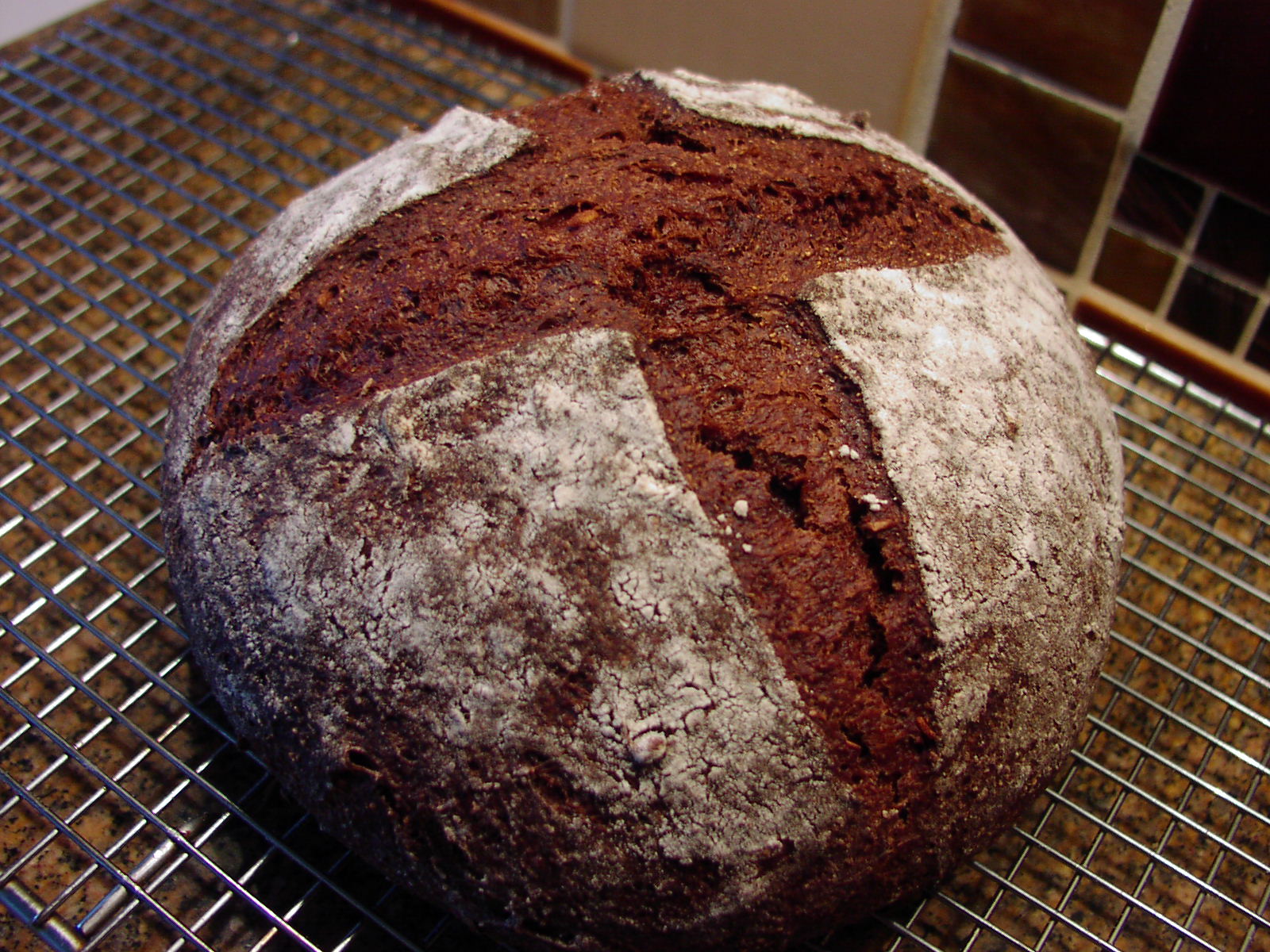This is just a terrific and easy recipe for a multigrain brown bread I was given by my good friend Vicki. Vicki is one of the most talented women I have ever known. She paints beautifully, creates gorgeous jewelry, fantastic pottery, lovely and whimsical mosaic objects, fabric art; you name it! She is also an avid gardener and cook. Oh, and did I mention, she’s off the charts smart! (Mother Nature was in truly good form the day she created this woman, I’m tellin’ you straight!) Anyway, when she offered me this recipe I jumped at the chance. (Of course, me being me, I changed a couple of things, but nothing terribly dramatic.)
So the following is a bread recipe that tastes like it came straight from a really good bakery. It is dense, delicious, and perfect. We love it toasted in the morning for breakfast, or with dinner slathered with room temperature butter. Anyway you cut it; this bread is a slice of heaven. Thanks again Vicki for this wonderful recipe, and also for being my friend. You are one amazing lady and I cherish our friendship.
- ½ c. sourdough starter (see recipe below)
- 1 tsp. active dry yeast
- 1 c. lukewarm milk
- ¼ c. molasses
- 1 tsp. instant espresso coffee (I use Medaglia D’oro)
- ¾ tsp. kosher salt
- 3 T. cocoa powder
- 2 T. dehydrated onion
- ½ c. rye flour
- ½ c. finely ground corn meal
- ½ c. gluten flour
- ½ c. whole wheat flour
- ½ to 1 c. all-purpose unbleached bread flour
- olive oil
Combine the sourdough starter, yeast, and milk in the bowl of your stand mixer. Cover with plastic wrap and set aside in a warm spot for about 4 hours. (If you don’t have a sour dough starter, combine 2 teaspoons active dry yeast and 1 cup slightly warm milk in the bowl of your stand mixer and let stand for about 5 minutes until foamy.) In both cases, after the yeast has proven that it is worthy of the trust you have placed in it, (in other words, it’s alive, bubbly, and hungry) add the molasses, instant coffee, salt, cocoa, onion, rye flour, corn meal, gluten flour, whole wheat flour, and about ¼ cup of the bread flour. Using your dough hook, mix until dough comes together. Knead about 4 minutes until dough is smooth. (Add more bread flour, a tablespoon or two at a time during the kneading process as necessary to reduce excess stickiness. But don’t add too much flour. You want fairly soft dough.)
Pour a tiny bit of olive oil over the loaf and using your hands, turn the dough until all sides are lightly greased and shaped into a ball. Cover the bowl with plastic wrap and let rise in a warm place for about 2 hours or until doubled in size. (Or give it the old “poke it with your finger” test. After the dough has been allowed to rise the amount of time given in the recipe, gently poke it with your finger. After you have withdrawn your finger, the dough should push back very slowly. In fact, it should barely push or spring back at all.)
Punch down and knead a few times to release air; shape into 1 round loaf (boule, French for “ball”) and place on a piece of parchment paper. Dust lightly with flour and gently lower parchment paper and boule into a bowl or basket. Cover with plastic wrap and allow to rise for 45 minutes.
Meanwhile place the lid and the bottom of a clay baker* (cloche) in your oven and preheat oven to 425 degrees. When the dough is ready, remove the clay baker and lid from the oven and carefully place the parchment paper and dough on the bottom portion of the cloche. Cut a large shallow X on the top of the loaf using a serrated knife. Then carefully cover the bread with the hot lid.
Place in the pre-heated oven for 30 minutes, remove the lid, reduce heat to 400 degrees and continue baking for an additional 15 minutes or until the crust is hard and the loaf sounds hollow when tapped. When the bread comes out of the oven, transfer to a cooling rack for at least 2 hours before cutting.
*A wonderful alternative to a cloche (clay baker) is a heavy covered Dutch oven like a size 28 Le Creuset pan. Follow the same instructions when using cast iron as given in the preceding paragraph when using a cloche, including pre-heating the cast iron pan.
Basic Sourdough Starter:
- 2 c. unbleached all-purpose flour
- 2 T. sugar
- 1 T. active dry yeast
- ½ tsp. kosher salt
- 2 c. warm water
Combine all ingredients in a plastic juice pitcher using a wooden or plastic spoon. (Don’t worry about lumps because the little yeasty beasties will make short work of dissolving the lumps!) Cover with lid, turning strainer in lid to pouring lip. (This allows air to reach the starter.) Let ferment 2 to 3 days at room temperature, stirring several times daily. After the third day, transfer starter to a covered glass container and refrigerate.
To use, remove desired amount for recipe and replenish starter by stirring in equal amounts of flour and water or follow the instructions for the particular bread you are making. Let stand at room temperature overnight. Return to refrigerator.
If a clear liquid forms on top, stir back into starter. Every time you use, replenish with equal amounts of flour and water. Even if you don’t use every week, replenish every 7 – 10 days with equal amounts flour and water. Use in any of your favorite bread, muffin, or pancake recipes.

